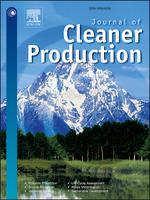Network design manuscript accepted by the Journal of Cleaner Production
Network design manuscript accepted by the Journal of Cleaner Production
A journal specializing in research in cleaner production, environmental, and sustainability research and practice has accepted a network design manuscript by members of the SOS Lab, an IE visiting scholar and a Purdue EEE faculty member.
The Journal of Cleaner Production has accepted a manuscript titled: "A bio-objective network design for value recovery of neodymium-iron-boron magnets: A case study of the United States". Hongyue Jin, Byung Duk Song, Yuehwern Yih, and John W. Sutherland. Journal of Cleaner Production. Volume 211, 20 February 2019, Pages 257-269. https://doi.org/10.1016/j.jclepro.2018.11.101
Dr. Song is a visiting scholar in the SOS Lab, and Dr. Sutherland is the Fehsenfeld Family Head of the School of Environmental & Electrical Engineering and a professor of mechanical engineering.
Abstract
Rare earth elements (REEs) such as neodymium (Nd) and dysprosium (Dy) are indispensable in modern society because they are vital for creating powerful neodymium-iron-boron (NdFeB) magnets used in many technological applications. These elements have been subject to a significant supply uncertainty. A promising strategy to alleviate supply risk is value recovery from end-of-life (EOL) products. This paper proposes a reverse supply network to optimize: 1) the locations and capacities of dismantling and recycling facilities, and 2) the transportation flows between collection centers, dismantling facilities, recycling facilities, and sales points. Two objectives are considered: maximizing profit and environmental benefits. A Pareto front is created that shows non-dominated optimal solutions. When the model was applied to the United States, California was found to be the most important state for EOL product collection, representing up to 22% of the total collection volume. Nevada, Tennessee, and Delaware were the key states for EOL product dismantling, and Nevada, Texas, and Delaware were the key states for NdFeB magnet recycling. A sensitivity analysis was performed to measure the impact of different NdFeB magnet price on the overall network design. While REE recovery is still at an early stage of the development, this research serves as a blueprint for constructing a profitable and environmentally friendly NdFeB magnet reverse supply chain.

